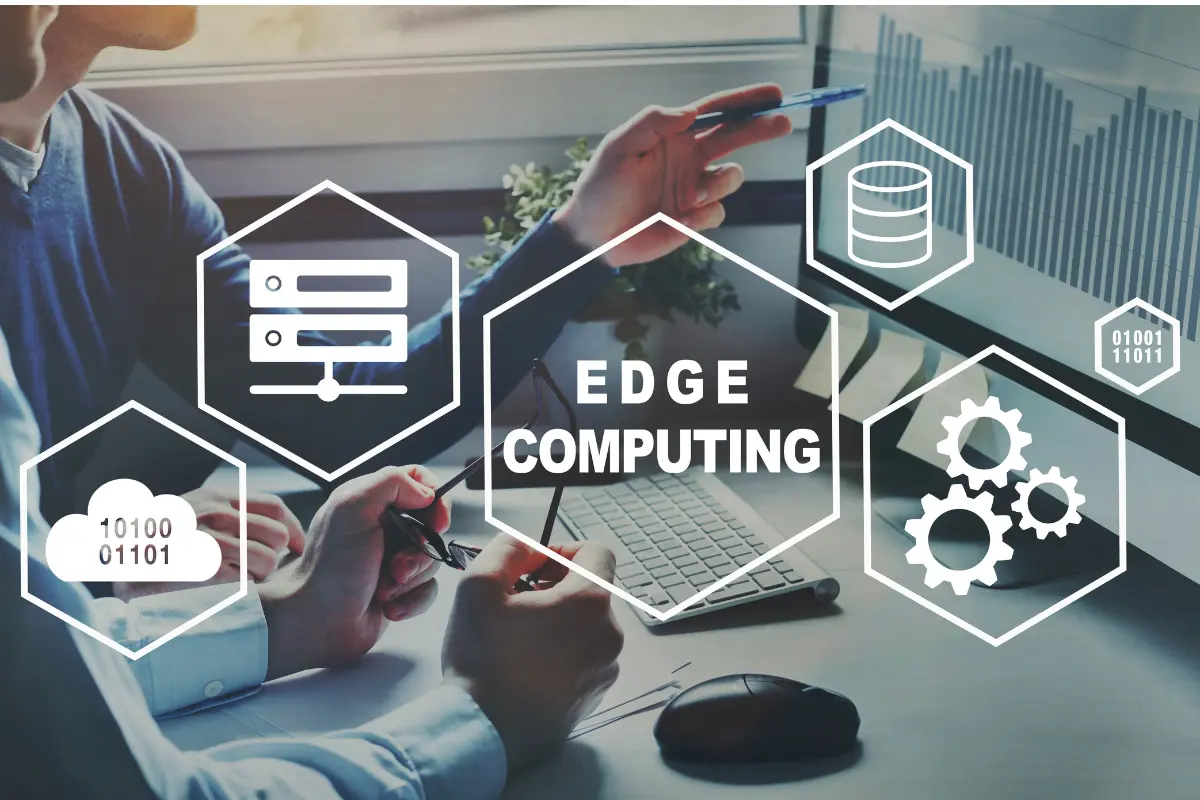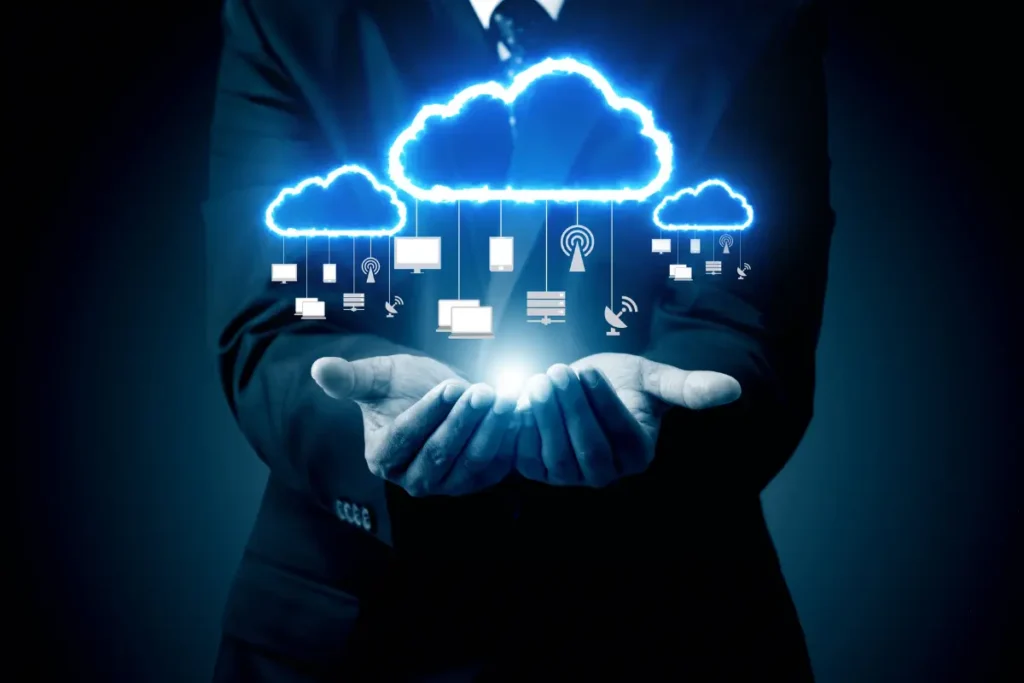In today’s digital world, the term edge computing vs. cloud computing has become universal. While both technologies are important aspects of the modern IT outlook, they serve visible purposes and offer unique assistance. In this piece of writing, we will deep dive into the complexities of edge computing vs. cloud computing, and underline their differences, advantages, challenges, and future tendencies.
Introduction to Edge Computing vs. Cloud Computing
Before we start our vision into the specifics, let’s first familiarize ourselves with the basic concepts of edge computing and cloud computing.
Edge Computing:
Edge computing refers to an administrative computing paradigm that brings computation and data storage closer to the location where it is necessary. Unlike customary cloud computing, which relies on intensive data centers, edge computing allows data processing to transpire near the source of data generation.
Cloud Computing:
On the other hand, requires delivering various services over the internet, including storage, servers, databases, networking, software, and more. It allows users to access assets and applications on-demand from a remote location, without the need for physical existence or involvements.
Understanding Edge Computing
Now, let’s explore edge computing in more detail.

Definition and Concept
Edge computing localized computing assets and moves them closer to the data source, such as IoT devices, sensors, or smartphones. By processing data locally, edge computing minimizes latency and bandwidth usage, making it perfect for applications that have essential real-time acceptance.
2. Key Characteristics
- Proximity to Data Source
- Low Latency
- Distributed Architecture
- Scalability
- Resource Coherence
3. Applications and Use Demonstration
Edge computing finds applications in different industries, including:
- Automotive Industries
- Smart Cities
- Industrial Automation
- Healthcare
- Retail Industry
3.Broad Definition of Cloud Computing
Now, let’s learn more about cloud computing.
Definition and Concept
Cloud computing depends on a network of remote servers organized on the Internet to store, manage, and process data. It offers adaptability, flexibility, and profit efficiency by allowing users to access assets on-demand without the need for physical existence.

2 Key Characteristics
- On-Demand Access
- Versatility
- Resource Pooling
- Rapid suppleness
- Pay-Per-Use Model
3. Applications and Use Instances
Cloud computing is used largely across various industries, including:
- Software as a Service (SaaS)
- Platform as a Service (PaaS)
- Infrastructure as a Service (IaaS)
- Data Storage and Backup
- Development and Testing circumstances
4.Differences Between Edge Computing vs. Cloud Computing
Now that we have clear information about both technologies, let’s compare the key differences between Edge Computing vs. Cloud Computing.
1. Architecture and Infrastructure
Edge computing depends on the localized architecture, with computing assets located closer to the data source. In divergence, cloud computing employs localized data centers located remotely.
2. Data Processing and Storage
Edge computing processes and stores data manually, near the source of data creation guiding lower latency and faster response times. Cloud computing, on the other hand, organizes and stores data in remote servers over the internet.
3. Latency and Speed
Edge computing offers ultra-low latency, making it unique for approaches that need real-time processing, such as the automotive industry and industrial automation. Cloud computing may launch latency due to the intermission between the user and the data center.
4. Authenticity and Security
Edge computing expands reliability by minimizing dependency on a single point of collapse, but it may cause challenges in terms of security and data privacy. Cloud computing offers robust security meters but may be permitting cyber threats.
5.Benefits of Edge Computing
Now, let’s scan the benefits of edge computing.
1. Better Response Time
By processing data locally, edge computing notably reduces latency, securing faster response times for condemning applications.
2. Minimize Bandwidth consumption
Edge computing decreases the need to transfer large volumes of data to localized data centers, thereby protecting bandwidth and decreasing network obstruction.
3. Expand Security and Privacy
Edge computing upgrades security by keeping compassionate data closer to the source, shortening the risk of data breaches, and securing compliance with data privacy proclamations.
6.Advantages of Cloud Computing
Likewise, cloud computing offers several benefits.
1. Adaptability and Resilience
Cloud computing allows users to measure assets up or down based on demand, securing optimal performance and profit efficiency.
2. Profit Efficiency
With cloud computing, associations can avoid upfront framework costs and pay only for the resources they take, leading to important cost savings.
3. Condense Management
Cloud computing clarifies IT management by focusing resources and providing a combined platform for categorization monitoring, and maintenance.
7.Challenges of Edge Computing
Despite its benefits, edge computing faces more challenges.
1. Connection Issues
Edge appliances may face connectivity issues in remote or irregular environments, restricting seamless data transmission and processing.
2. Limited Resources
Edge Gadgets often have limited computational power and storage volume, losing control of the complexity of applications that can be located.
3. Data Privacy Concerns
Storing and processing acute data locally raises analysis about data privacy and compliance with regulatory requirements.
8.Challenges of Cloud Computing
Likewise, cloud computing has its share of challenges.
1. Network Dependency
Cloud computing depends heavily on network connectivity, and disturbances or outages can collide access to critical assets and services.
2. Security Risks
Storing data on remote servers reveals it to potential security threats, such as hacking, malware, and uncertified access.
3. Compliance Issues
Compliance with industry directions and data protection laws can be challenging in the cloud, especially for companies operating in highly regulated sections.
9.Future Trends and Potential Developments
Looking ahead, various trends and developments are forming the future of Edge Computing vs. Cloud Computing.
1. Integration of Edge vs. Cloud Computing
We can expect to see greater integration between Edge Computing vs. Cloud Computing, abusing the power of both paradigms to optimize performance and regulation.
2. Adoption in Various Industries
Edge Computing vs. Cloud Computing will continue to acquire adhesion across various industries, driving innovation and transformation in areas such as healthcare, manufacturing, transportation, and more.
3.Impact on Technology Prospect
The expansion of Edge Computing vs. Cloud Computing technologies will reshape the technology multiplication, fueling developments in areas such as artificial intelligence, machine learning, and the Internet of Things.
More Read: THE 10 MOST EXPENSIVE CARS IN THE WORLD FOR 2023
Conclusion
In conclusion, edge computing vs. cloud computing are two perceptible yet supporting paradigms that play a vital role in today’s digital ecosystem. While edge computing offers ultra-low latency and increased privacy, cloud computing provides expandable flexibility and localized management. By understanding differences between Edge Computing vs. Cloud Computing, benefits, and challenges, organizations can tackle the full potential of both technologies to drive innovation and achieve their business goals.
